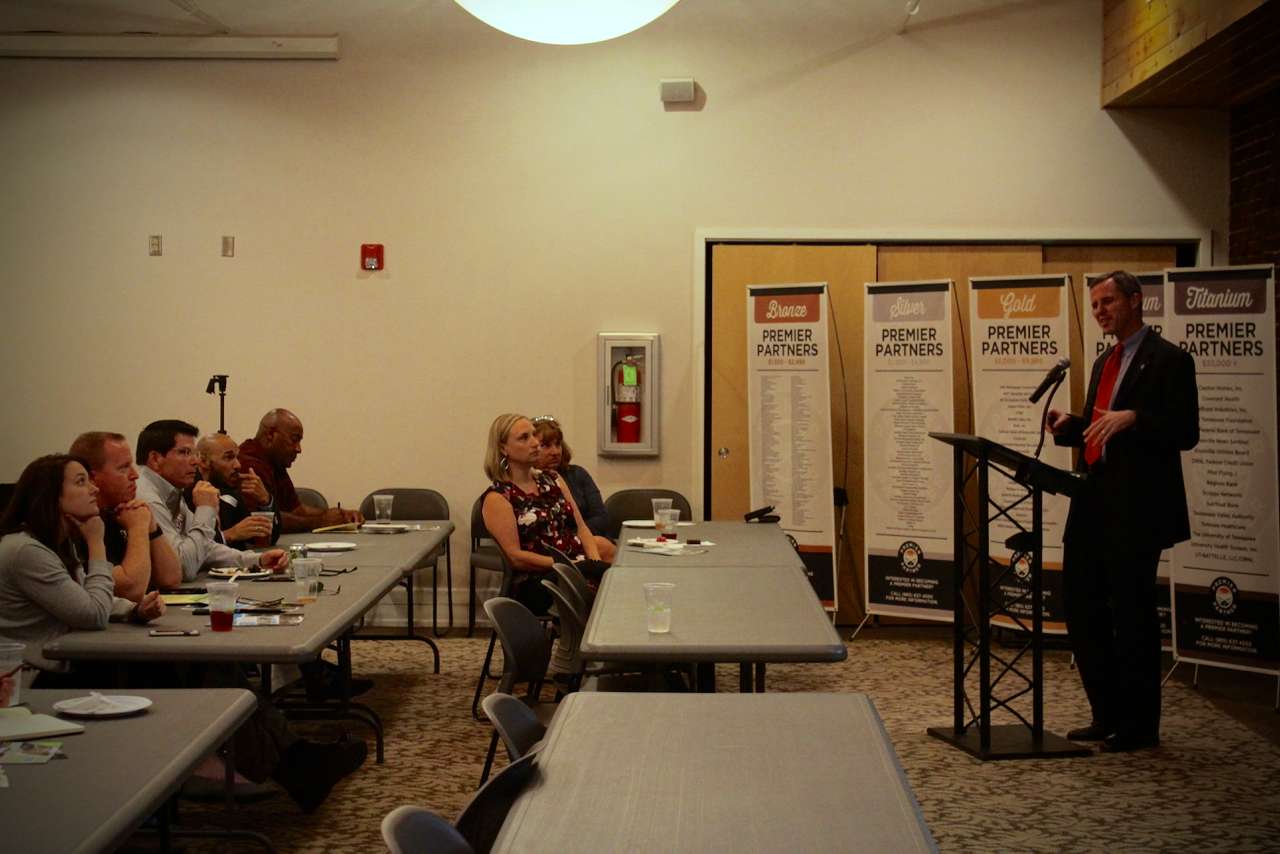Rob Brawner, Executive Director of the Atlanta BeltLine Partnership, spoke several times in Knoxville on June 6 and 7.
The events and meetings attracted around 100 participants, including elected officials, planning commissioners, developers, designers, and members of the general public.
His presentations focused on the lessons that other communities can learn from the BeltLine, a partially completed project that will eventually encircle the heart of Atlanta with a network of trails and transit. Thus far, 8.7 miles of trails have been completed as part of the BeltLine and it has spurred $3.7 billion in economic development.
You can see Brawner’s presentation here.
Brawner was the sixth speaker to visit Knoxville as part of the ongoing Walkability Speaker Series, which is sponsored by the TPO in partnership with the Tennessee Department of Health, East Tennessee Quality Growth, the Knoxville Area Association of Realtors, the Knoxville Chamber, and the Knoxville Chapter of the American Planning Association.
The Walkability Speaker Series will take a break over the peak vacation months of summer, but will return in late August or September. To get on the email list for this speaker series, contact ellen.zavisca@knoxplanning.org.




 This is part of an effort to integrate more bikeways through regular pavement preservation projects. Forty-five engineers, designers, and planners from across the state attended this training on April 18, 2017. FHWA sent two instructors, Thomas Huber and Eric Mongelli PE from Toole Design Group, to lead the workshop.
This is part of an effort to integrate more bikeways through regular pavement preservation projects. Forty-five engineers, designers, and planners from across the state attended this training on April 18, 2017. FHWA sent two instructors, Thomas Huber and Eric Mongelli PE from Toole Design Group, to lead the workshop.
